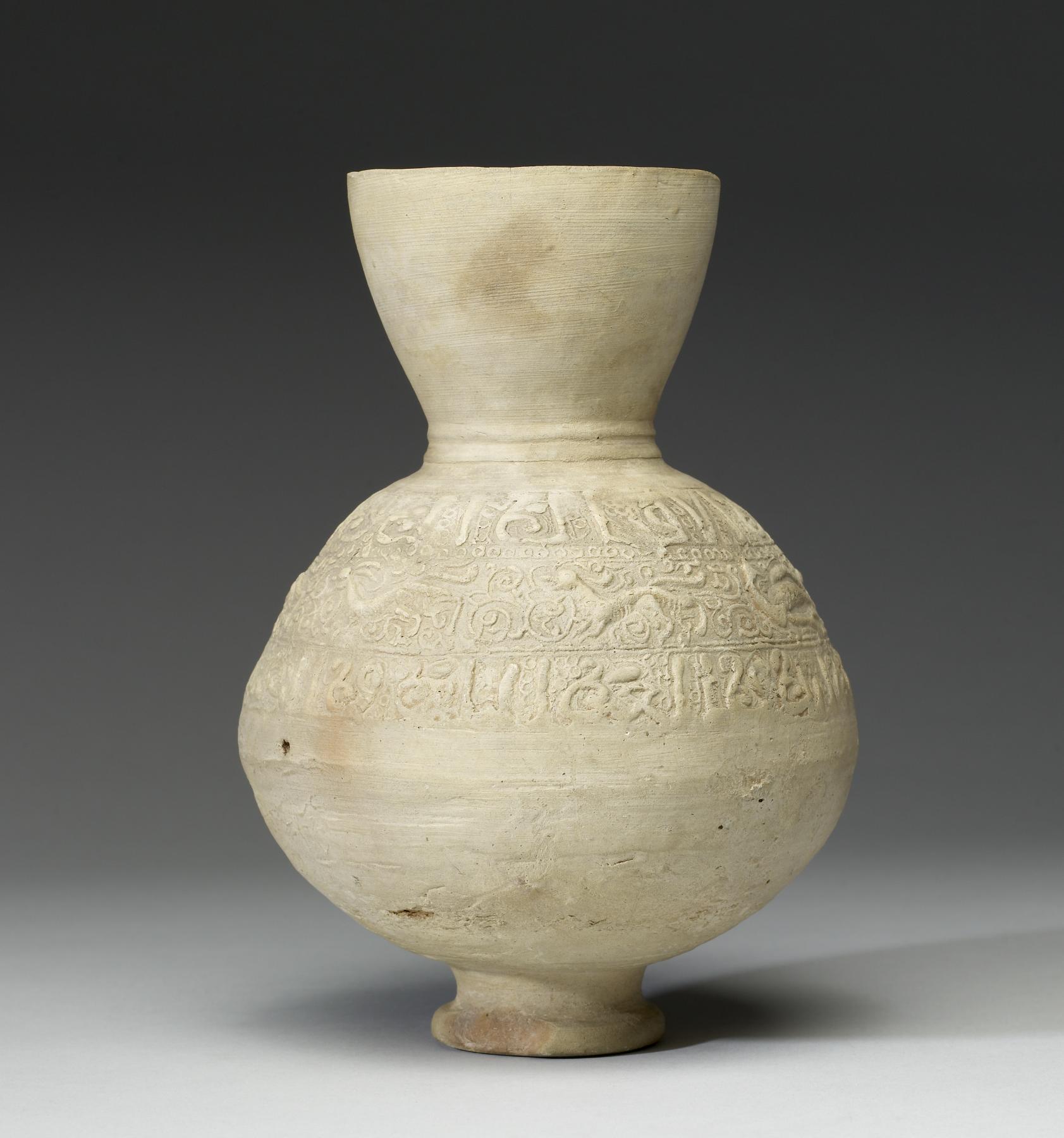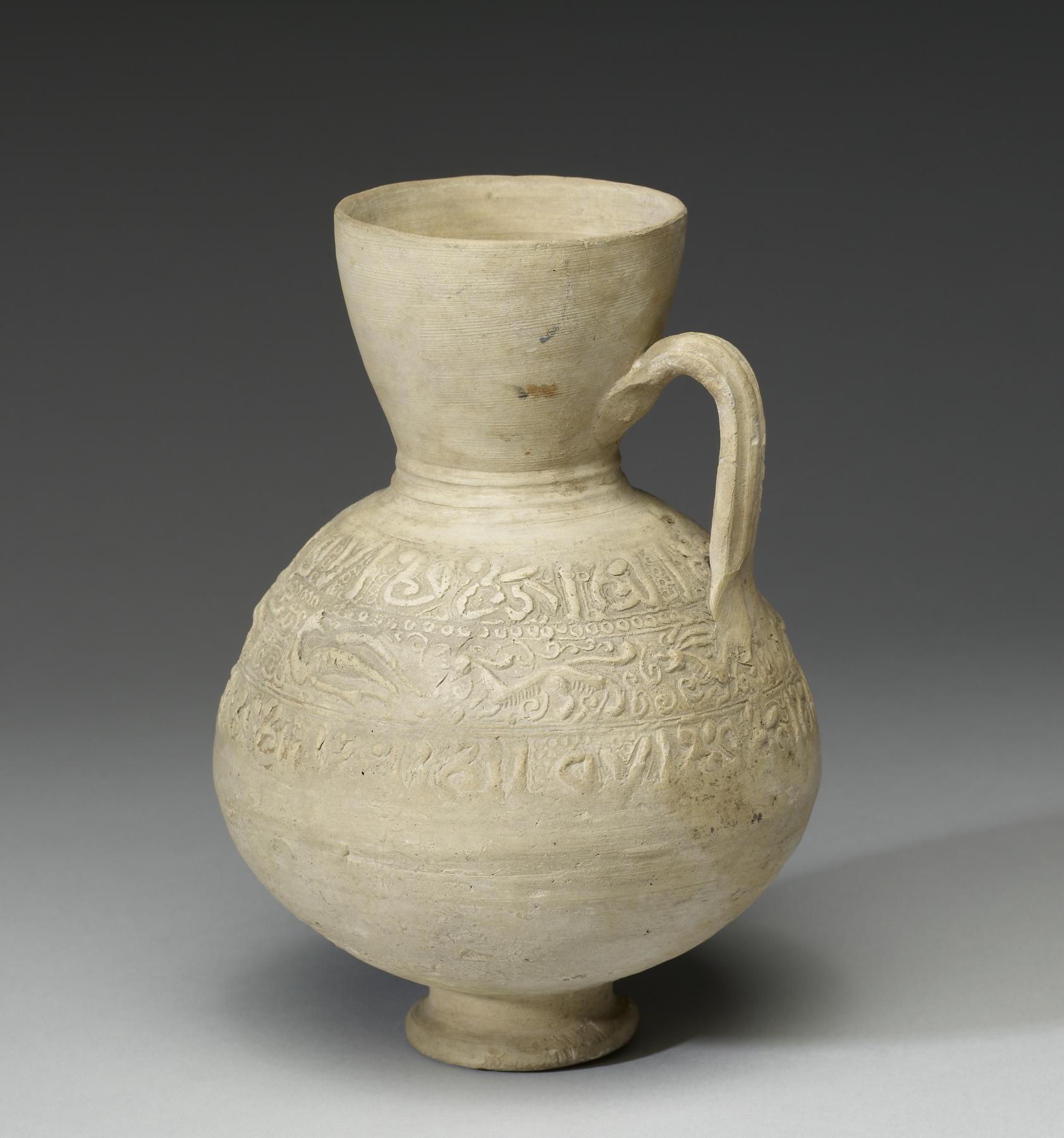Jug
(Islamic World )
American excavations in Fustat have uncovered many examples of these unglazed earthenware jugs. This one has two inscriptional bands in relief and an animal frieze on an arabesque ground. The middle section was made from a mold, and this suggests that these types of jugs were made in multiples. Fustat was, in fact, acclaimed during the medieval period for ceramic mass production. It should be noted, however, that similar examples were also discovered at sites in Syria and Afghanistan.
Provenance
Provenance (from the French provenir, 'to come from/forth') is the chronology of the ownership, custody, or location of a historical object. Learn more about provenance at the Walters.
Dikran Kelekian, New York and Paris, [date and mode of acquisition unknown] [as excavated at Fostat, Egypt (?)]; Henry Walters, Baltimore, 1927, by purchase; Walters Art Museum, 1931, by bequest.
Exhibitions
| 1981 | The World of Islam. Saint Mary's College, St. Mary's City. |
Conservation
| Date | Description | Narrative |
|---|---|---|
| 11/17/1981 | Examination | examined for loan |
Geographies
Egypt, Fustat (Place of Origin)
Measurements
H: 8 7/16 x W: 5 15/16 in. (21.4 x 15.1 cm)
Credit Line
Acquired by Henry Walters, 1927
Location in Museum
Not on view
Accession Number
In libraries, galleries, museums, and archives, an accession number is a unique identifier assigned to each object in the collection.
In libraries, galleries, museums, and archives, an accession number is a unique identifier assigned to each object in the collection.
48.1152






